Reviewed by Dr Sylvia Shortreed BVSc
There are many things that can cause inflammatory skin conditions in dogs, but the result is usually the same - an uncomfortable and itchy dog that scratches itself silly. One of these skin conditions in dogs is a parasitic one called mange, a pesky and potentially debilitating infection caused by tiny mites, only visible under a microscope.
We’re here to take you through everything you need to know about mange, from how dogs get it to how you can get rid of it.
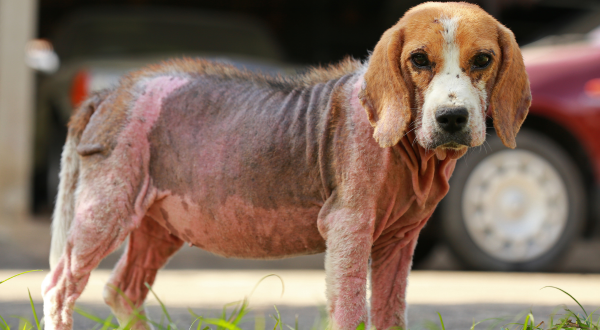
What is mange in dogs?
Mange is a broad term for an uncomfortable and unsightly skin condition caused by a mite. Fortunately, mange is uncommon in dogs, but it is always best to stay informed so that prompt action can be taken if you see symptoms of this pesky parasite. We explain more about mange, especially the three most common types in Australia.
What causes mange?
Mange is primarily caused by tiny parasitic mites that infest your dog's skin. These skin mites belong to different species, with sarcoptes and demodex mites being the most common culprits. Another species of mite that can infest both dogs and cats is the ear mite (Otodectes cynotis). These mites live inside the dog’s or cat’s ear and can cause intense itching and secondary ear infections.
Decoding the different types of mange
So now we know the 3 specific types of mites that are responsible for mange — what’s the difference between them?
Sarcoptic mange
Sarcoptic mange is a highly contagious skin disease caused by the Sarcoptes scabiei mite. These microscopic mites burrow into a dog's skin, where they lay eggs, leading to intense itching and skin irritation. Sarcoptic mange mites are also zoonotic, which means they can be transmitted between animals and humans, causing a similar condition known as human scabies, which can be difficult to treat.
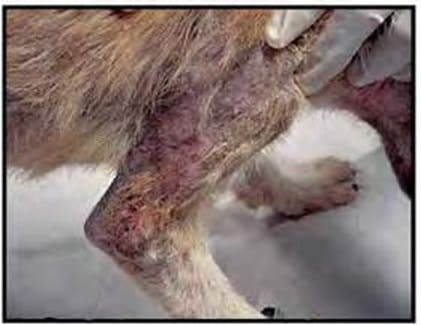
The symptoms of sarcoptic mange include severe itching, hair loss, redness and crusty skin. The itching is often so intense that it can cause the dog to scratch and bite itself incessantly, leading to further skin damage and potential secondary bacterial skin infections.
Is sarcoptic mange contagious?
Sarcoptic mange is highly contagious and can spread through direct contact with an infected dog or an environment contaminated with mites. As you can imagine, this type of mange can get out of control quickly, so prompt diagnosis and treatment are essential to protect both you and your pooch.
Demodectic mange
Demodectic mange, also known as demodicosis or red mange, is caused by an overpopulation of Demodex mites. Demodex mites are naturally present in small numbers on the skin of all dogs and generally do not cause any problems. However, if your dog has a weak immune system, these mites can multiply excessively, leading to demodectic mange.
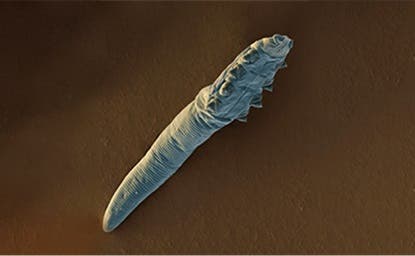
There are two main types of demodectic mange:
Localised demodectic mange
In this form, the mite population is limited to specific areas of the dog's body, resulting in hair loss, mild redness and slight skin irritation. It usually occurs in young puppies and often resolves on its own without treatment.
Generalised demodectic mange
This more severe form of demodicosis affects larger areas of the dog's body, causing widespread hair loss, itching, redness, inflammation and sometimes the formation of crusts or sores. Generalised demodectic mange can be challenging to treat and will require medical intervention.
Is demodectic mange contagious?
Demodectic mange is not contagious to other animals or humans, as these mites are considered normal inhabitants of a dog's skin. However, recurrent or chronic mange episodes may occur if a dog's immune system remains compromised. Treatment depends on the severity and type of mange, and it often involves medication and addressing any underlying health issues that may be contributing to the condition.
Otodectic mange
Otodectic mange, also known as ear mite infestation, is the most common parasitic mite condition that affects dogs and some other animals (including cats). The mites responsible for otodectic mange are called Otodectes cynotis. These tiny mites specifically infest the ear canals and sometimes the skin around your dog's or cat’s ears.
The symptoms of otodectic mange look different to both sarcoptic and demodectic mange because it’s localised within the ear. Common signs to watch out for include ear scratching, head shaking, a crusty ear discharge and inflammation around the ear. Fortunately, otodectic mange is easily treatable with ear drops or topical medications.
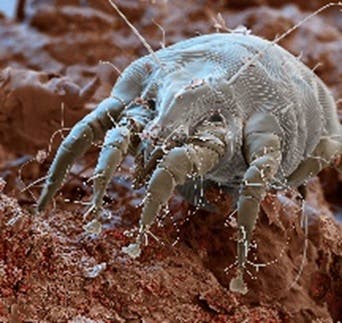
Is otodectic mange contagious?
Otodectic mange is highly contagious and can spread between animals through close contact, however this mite is not a zoonotic one.
Symptoms of mange
Identifying mange on your dog involves observing their behaviour and examining their skin and coat for specific signs. Here are some steps to help you identify mange:
- Scratching and itching: If your dog is constantly scratching, biting or licking certain areas of their body, it may indicate that they have a mange infection. The itching is often severe and persistent.
- Hair loss: Mange can cause significant hair loss in localised areas or spread across the body. Look for patches of thinning hair or bald spots, particularly around the ears, face, neck, elbows and legs.
- Redness and irritation: Check your dog's skin for redness, inflammation, and signs of irritation due to the mites burrowing into the skin.
- Crusts and scabs: Mange-infested areas may develop crusts, scabs or scales due to the skin's response to the mite's presence and due to scratching and biting at the area.
- Greasy or oily coat: Dogs with mange may exhibit an abnormal greasy or oily appearance to their coat, often with a typical odour.
- Lesions or papules: In some cases, mange can cause small, raised bumps known as papules or larger lesions on the skin.
- Ear infections: Otodectic mange leads to symptoms such as head shaking and pawing at infected ears, a crusty discharge and smell from the ears and commonly you will see signs of scratching and self-trauma to the inside and area surrounding the dog’s ear.
If you suspect your dog has mange or notice any of these symptoms, it's crucial to take them to a vet. Seeing a professional means, you can get a proper diagnosis and develop a treatment plan. Early detection and intervention can prevent the mange from getting out of hand, so you can help your pooch get back to being comfortable and itch-free.
How to treat mange in dogs
As with all diseases, prevention is the best form of cure. Make sure your dog is up to date with their parasite protection to prevent them from getting infested with the mites that cause mange. Credelio PLUSTM is a small chewable tablet that is easy to give to your dog. With monthly use, you can rest assured that your pooch is protected from demodectic mites, as well as fleas, ticks, heartworm disease and intestinal worms. This level of broad-spectrum protection is the best way to keep your dog safe from common parasites that can cause serious health issues.
If your dog has already succumbed to mange, it’s crucial that you take them to the vet for treatment. A vet will be able to diagnose the specific mange your dog has and then tailor a treatment plan accordingly. Generally, vets will prescribe topical ointments to treat the itching and oral medications to kill mites, alongside medicated baths for additional relief. Credelio PLUS is also an effective method of treatment for demodectic mange with a monthly dose. Treating otodectic mange involves using veterinary-prescribed ear drops or topical medications specifically designed to kill the ear mites. Treatment may also include any consequent secondary bacterial ear infections which may include cleaning the ears to remove debris and discharge. AdvocateTM spot-on, an easy-to-use monthly parasite preventative is an excellent option to treat and prevent demodectic, sarcoptic and ear mites in dogs.
No matter what kind of mange your dog has, it’s also vital to thoroughly clean and disinfect your dog's environment to prevent reinfestation. Wash bedding, toys, and any surface your dog regularly comes into contact with.
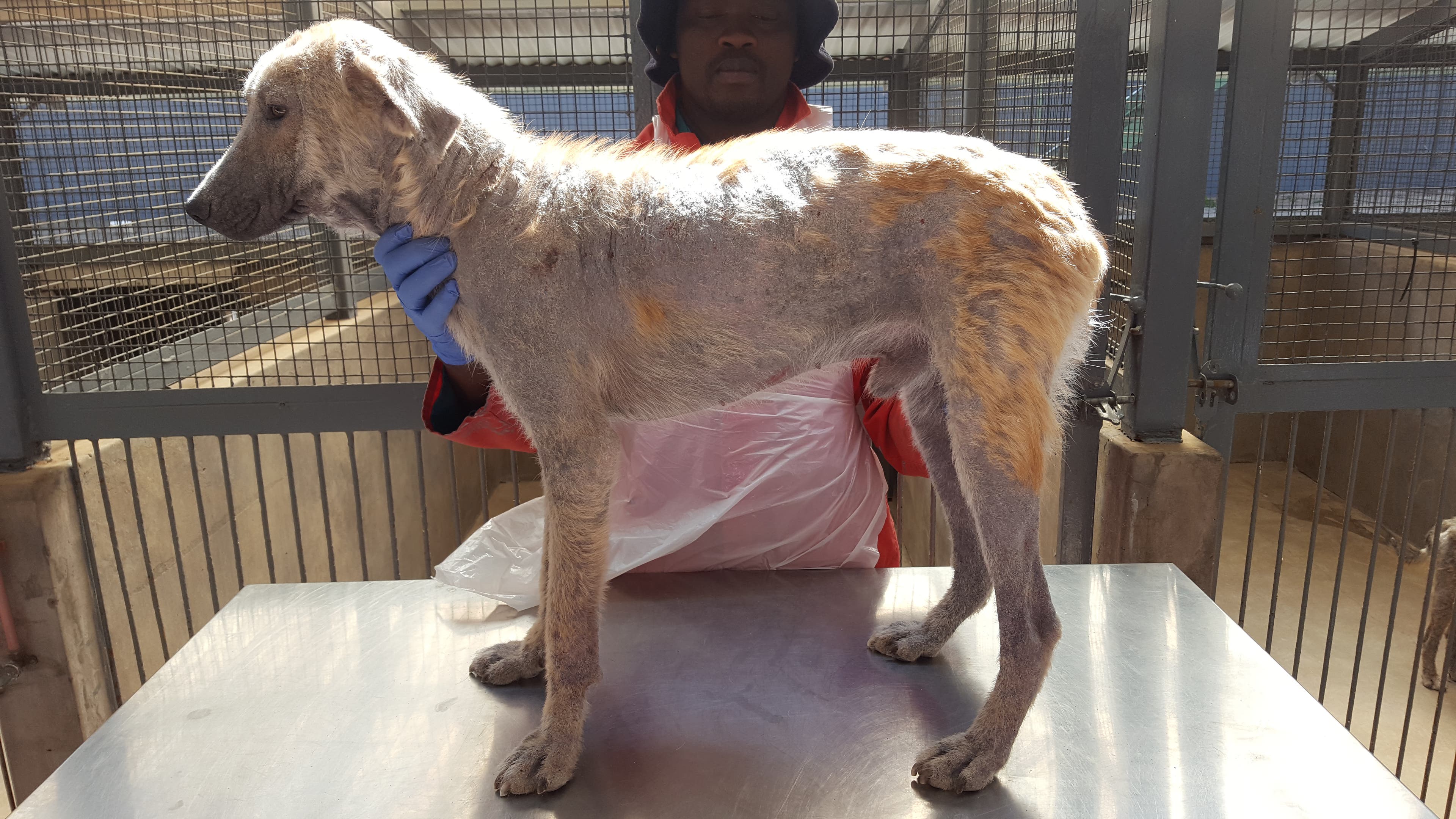
Image 1: Dog with generalised demodex before treatment with Credelio PLUS

Image 2: Same dog, after 3 monthly doses of Credelio PLUS
FAQs about mange on dogs
What does the start of mange look like?
The appearance of mange at the early stages can vary depending on the type of mange and the affected dog. Here's how the start of mange might look like for the three most common types:
- Sarcoptic mange: Itching, skin redness, hair loss, crusts and sores.
- Localised demodectic mange: Patchy hair loss, mild redness, minimal itching.
- Otodectic mange: Intense ear scratching, head shaking, ear discharge, foul-smelling ear.
Be aware that the early signs of mange can be similar to symptoms of other skin conditions like flea allergies. If you suspect your dog might have mange or notice any skin issues, it's vital to consult a vet for a proper diagnosis. Consulting with a professional means that your dog will get the most appropriate treatment.
What causes mange around a dog’s eyes?
Mange around a dog's eyes is typically caused by Demodex canis, a species of demodex mites. As we mentioned earlier, demodex mites are generally harmless but can sometimes cause mange to appear in a localised area on your dog’s body.
Localised demodectic mange around the eyes is known as ocular demodicosis. The mites infest the hair follicles and oil glands around the eyes, causing irritation, itching, hair loss and inflammation. Your dog may rub or scratch their eyes due to the discomfort.
It's important to differentiate ocular demodicosis from other eye conditions, such as allergies, infections or irritations, as the treatment approaches differ.
How can I protect my dog from demodex mites?
Protect your pooch from demodex mites and other dangerous parasites with Credelio PLUS, the smallest chew for your biggest love. AdvocateTM , a monthly, topical, parasite treatment is another effective method of treatment and prevention from ear mites, demodectic mange and sarctoptic mange and has been trusted to protect Australian pets since 2004 from fleas, worms and heartworm disease.
Always read and follow the product label.
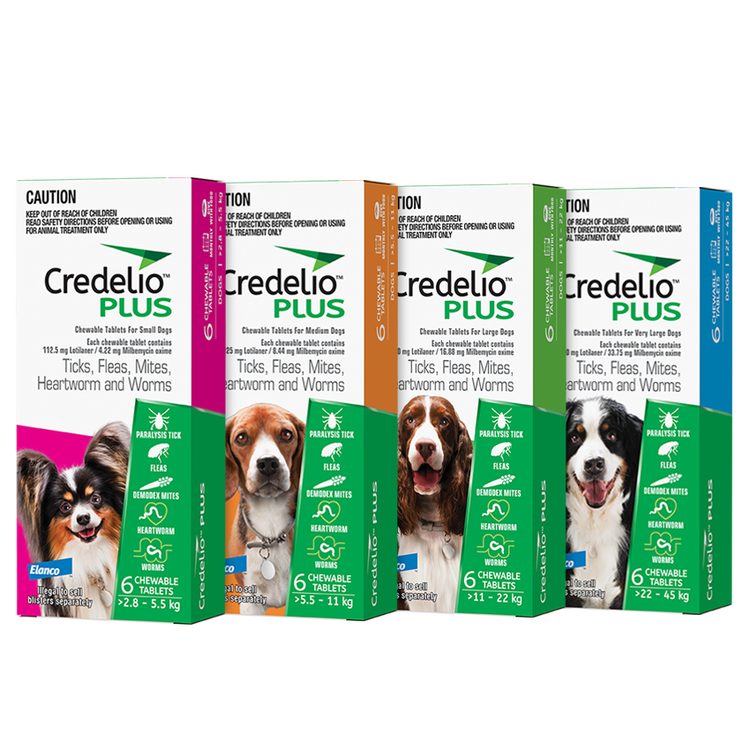
Credelio™ Plus 4 in 1 protection in the smallest chew
Keeps your dog protected from ticks, fleas, demodex mites PLUS heartworm and intestinal worms.

Advocate for dogs
Advocate provides fast relief from fleas, prevents deadly heartworm and helps protect your dog and your family from most intestinal worms





